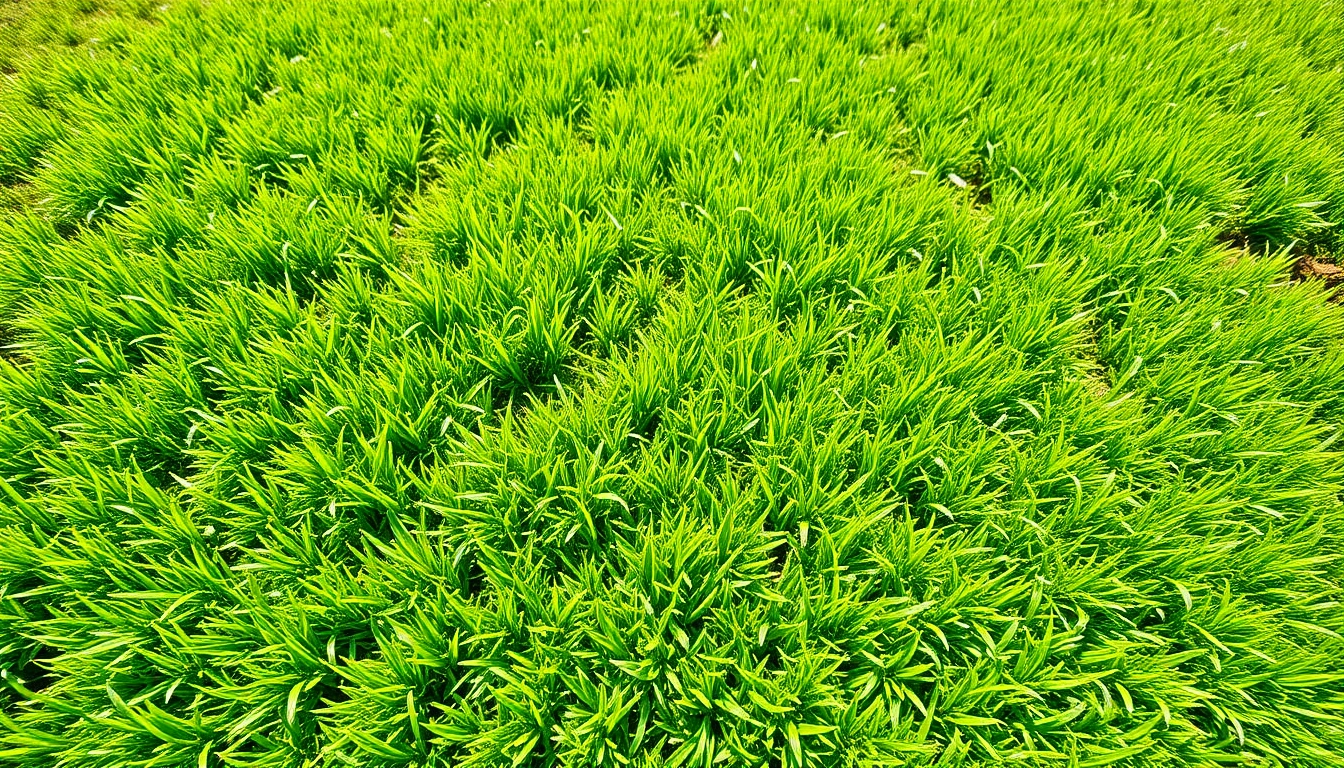Understanding Over Seeding
What is Over Seeding?
Over seeding is a lawn care technique that involves planting grass seed directly into existing turf without the need for extensive soil disruption. This method serves to revitalize a lawn by introducing new grass without killing the existing plants. Essentially, it’s a soil-friendly way to enhance the density and overall health of your grass cover.
One of the primary goals of over seeding is to fill in bare or thinning areas in your lawn, creating a lush and vibrant yard. This technique can improve the lawn’s color, thickness, and resilience by allowing the new seed to germinate and thrive alongside the established grass.
Benefits of Over Seeding for Your Lawn
Over seeding offers several advantages, making it a popular choice among homeowners and lawn care enthusiasts. Here are some key benefits:
- Enhanced Lawn Density: By introducing new grass seeds, you can increase the overall density of your lawn, which helps to crowd out weeds and reduce bald spots.
- Improved Resistance: Over seeding can enhance your lawn’s ability to resist disease and pest pressures, particularly when you select cultivars that are bred for robustness.
- Better Color and Texture: Adding new grass seed can improve the overall look of your lawn, contributing to a more vibrant color and a uniform texture.
- Increased Tolerance: New seed varieties often boast better drought resistance and adaptability to local climate conditions, providing your lawn with improved resilience over time.
Common Misconceptions About Over Seeding
Despite its popularity, there are several misconceptions about over seeding that can deter homeowners from trying it. Understanding the truth can help you make informed decisions:
- Myth – It’s Only for Thin Lawns: While over seeding is effective for thin areas, it can also benefit a healthy lawn by introducing new varieties and enhancing its strength.
- Myth – You Must Kill the Existing Grass: Many believe that existing grass must be killed to get results. In fact, over seeding works best when the existing grass is healthy and can support new growth.
- Myth – It’s Too Complicated: The over seeding process is straightforward and can be accomplished by most homeowners with the right tools and preparation.
When to Over Seed for Optimal Results
Seasonal Timing: Best Times for Over Seeding
The timing of your over seeding efforts can greatly affect the outcome. In general, the best times to over seed are:
- Late Summer to Early Fall: This period is ideal because of favorable soil temperatures and ample moisture, creating an optimal environment for seed germination.
- Spring: Depending on your climate, spring can also be suitable for over seeding. However, be cautious of competition from weeds during this season.
Weather Considerations for Successful Over Seeding
Weather patterns play a crucial role in the success of your over seeding efforts. Ideal conditions include:
- Moderate temperatures, preferably between 60°F to 75°F (15°C to 24°C) guide optimal seed germination.
- Sufficient rainfall or irrigation to keep the soil consistently moist but not soggy, as too much water can drown the seeds.
Soil Preparation Before Over Seeding
Before you start the over seeding process, proper soil preparation is essential. Consider these steps:
- Mow the Lawn: Cut your existing grass to a shorter height, typically around 1.5 to 2 inches, to allow sunlight to reach the new seeds.
- Rake the Area: Use a rake to loosen the top layer of soil, which increases seed-to-soil contact for better germination rates.
- Apply Fertilizer: Using a starter fertilizer can help provide the necessary nutrients that young grass seedlings need to grow strong.
The Over Seeding Process Explained
Choosing the Right Grass Seed for Over Seeding
Selecting the appropriate grass seed is critical for successful over seeding. Consider the following:
- Grass Type: Choose a grass type that is compatible with your existing lawn and suitable for your climate zone. For instance, cool-season grasses thrive in northern climates, whereas warm-season varieties are best for southern regions.
- Seed Quality: Look for high-quality seeds that have a good germination rate. Seed labels often indicate this information.
Step-by-Step Guide to Over Seeding
Once you’ve prepared your lawn and selected the right grass seed, it’s time to get started. Here’s a step-by-step guide:
- Prepare the Lawn: Follow the preparation steps mentioned earlier.
- Seed Application: Evenly distribute the grass seed using a spreader to ensure uniform coverage.
- Rake Lightly: After seeding, lightly rake the area to incorporate the seeds into the soil and cover them adequately.
- Water: Initially, water the area gently to moisten the soil. Aim for daily watering until the seeds germinate.
Post-Application Care After Over Seeding
After over seeding, proper care is essential for ensuring successful growth. Keep the following in mind:
- Maintain a consistent watering schedule, especially during dry spells.
- Avoid heavy foot traffic on the newly seeded areas until the new grass is well established.
- Monitor the new grass for signs of pest or disease and treat accordingly.
Troubleshooting Common Over Seeding Issues
Dealing with Weeds Post Over Seeding
Weeds can be a significant challenge after over seeding, but there are ways to manage them:
- Use a selective herbicide after the new grass has been mowed at least three times, ensuring you’re not harming the young plants.
- Hand-pulling weeds can be effective for small patches, especially in areas where herbicides might not be appropriate.
Ensuring Successful Germination of New Grass
To ensure that your new grass germinates successfully, adhere to the following practices:
- Maintain consistent moisture in the topsoil, being careful not to allow it to dry out.
- Monitor soil temperature to help predict when germination is likely. Soil temperatures consistently above 60°F promote quicker germination.
Signs of Successful Over Seeding
Recognizing the signs of successful over seeding can help you determine if your efforts have paid off:
- New sprouts appearing a week to ten days after seeding is a positive indicator of success.
- Increased density and thickness in your lawn as new grass fills in voids.
- A more vibrant green color compared to areas where no seeding was done.
Advanced Techniques and Tips for Over Seeding
Combining Over Seeding with Fertilization
Pairing your over seeding efforts with proper fertilization can yield remarkable results. Use a starter fertilizer to give new seeds a nutrient boost. Choosing slow-release fertilizers can provide a prolonged nutrient supply, supporting the growth of your new seedlings over time.
Understanding Interseeding vs. Over Seeding
It’s important to understand the difference between interseeding and over seeding. While both techniques can improve lawn health, interseeding typically refers to planting grass seeds among existing plants in a more strategic fashion, while over seeding involves a blanket application aimed primarily at filling in bare patches.
Long-term Lawn Care After Over Seeding
After you’ve overseeded your lawn, the commitment does not stop there. For long-term success, consider the following:
- Continue monitoring and addressing weed issues as they arise.
- Establish a fertilization schedule that meets the needs of your grass type.
- Maintain proper mowing height and schedule; mowing too short can stress new grass.



